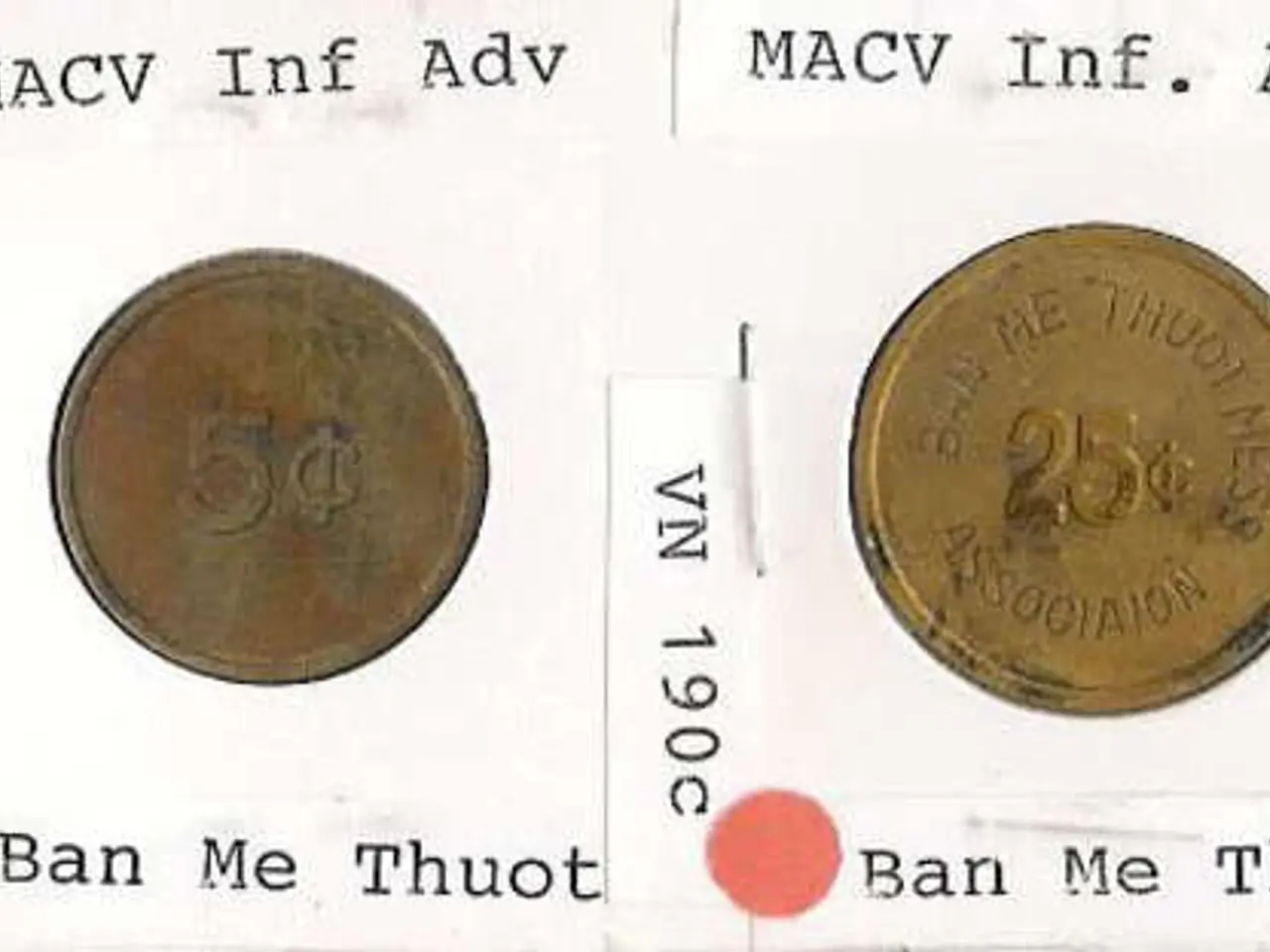Hackers Transfer 3,520 Bitcoin to Monero, Triggering a Sudden Rise in Monero's Value
A Wild Monero Ride: Unmasking the Crypto Laundering Operation Behind the Surge
The cryptocurrency scene was sent reeling by a staggering 51% Monero surge, leaving markets in a state of shock. A shrewd on-chain investigator, ZachXBT, traced a questionable Bitcoin transfer worth approximately $330 million. The funds from this transfer were swiftly transformed into XMR, via multiple quick exchanges. Notably, the perpetrator splurged on unusually high fees to cloak the origin of the pilfered coins, fueling speculation about an elaborate crypto laundering scheme. As traders follow Monero’s every move, questions are raised about the implications of such provocative fund swaps.
Monero: The Shrouded Master of the Cryptocurrency Laundering Underworld
In a sobering X post, ZachXBT shared the tale of a suspicious 3,520 BTC transfer, later discovered to be blatantly stolen Bitcoin. As the funds moved through six exchanges, their objective became clear: to eliminate any trace of the heist. Consequently, Monero network activity experienced a dramatic increase, triggering a meteoric Monero surge within hours. On-chain analysts attributed this surge to Monero's privacy features seamlessly absorbing the stolen Bitcoin, with the protocol's design for untraceable XMR further fuelling price momentum by concealing transaction paths.
April 28, 2025, marked a pivotal moment when independent hackers were suspected of launching the assault, whereas North Korea's tactics didn't align. Meanwhile, the Monero blockchain drew scrutiny for its role in crypto laundering. Its robust privacy features have made Monero the preferred method for ferrying large sums of ill-gotten funds. This event serves as a stark reminder of the growing prevalence of XMR in masking clandestine cryptocurrency transactions, even as its veil of secrecy intensifies debate and concerns within the broader crypto community. Some observers caution that such tactics could complicate regulatory efforts globally.
The Laundering Operation That Shook the Crypto World
Monero's price skyrocketed to $347.72 before tumbling down to $264.18 after the mammoth Bitcoin transfer. This exhilarating Monero surge ranks among the most significant intraday privacy coin rallies in recent memory. At its peak, the rally persisted for seven hours, marking a historic privacy coin milestone. As the spotlight shifts to Bitcoin transactions, criminals are gravitating towards laundering stolen Bitcoins and other digital currency towards Monero, reflecting altering criminal finance strategies. Monero's cryptographic obfuscation results in untraceable XMR transactions, offering criminals a cloak of anonymity and hindering law enforcement from tracking transactions.
Monero occupies the top spot as the leading privacy coin, boasting a $5.3 billion market cap and ranking 27th among cryptocurrencies. Unlike Bitcoin and Ethereum, Monero's ring signatures and stealth addresses conceal transaction participants, making their actions virtually untraceable. While some embrace Monero's confidentiality, others question the coin's link to illicit activities. Monero's privacy features may facilitate laundering operations, but this only intensifies the debates each time a Monero surge challenges the balance between privacy and legal compliance.
Fraud Proof or Flawed UNtraceability?
Despite attempts to crack Monero's privacy, the coin remains unbroken. In 2020, the IRS even offered a $625,000 bounty to expose the network's weaknesses, yet the increase in illicit usage remains unaffected. This persistent challenge underscores Monero's position as the ultimate private cryptocurrency fortress. However, on occasion, law enforcement agencies can confiscate Monero assets without compromising the encryption defenses. For instance, British dark web dealer Jack Edward Finney surrendered his Monero holdings, under a court's confiscation order, following his conviction based on operational security flaws rather than network vulnerabilities. This serves as a reminder that Monero's privacy encryption is safer than ever thanks to its users' vigilance, rather than inherent flaws.
Police in Finland sparked controversy in January 2024 when they claimed to have tracked Monero transactions in the Netherlands. Experts swiftly pointed out that the Monero blockchain remained secure, thanks to user oversights rather than blockchain cryptography loopholes. Financial privacy with Monero demands vigilance and a profound understanding of security protocols, as apparent vulnerabilities stem from user errors rather than deficiencies in the Monero network.
A Would-be Monero Usurper or a Shoulder-to-Shoulder Partner?
Privacy advocates at the MAGIC Monero Fund have argued that law enforcement overstates Monero cracking claims. Although failing to segregate accounts can expose users to minor discrepancies between Bitcoin and Monero, Monero's privacy technology remains uncracked. Consequently, the allure of a Monero surge after significant hacks ensures that Monero will remain the preferred destination for pilfered Bitcoin seeking anonymity, making it the go-to choice for those aiming to evade blockchain surveillance.
- The surges in Monero's price are often linked to suspicious Bitcoin transfers, such as the one traced by ZachXBT worth approximately 3,520 BTC.
- Monero's network activity has been known to increase dramatically after laundered Bitcoin funds are converted into XMR, as observed during the mentioned incident.
- Monero's robust privacy features, including ring signatures and stealth addresses, have made it a preferred method for laundering stolen or ill-gotten funds within the cryptocurrency market.
- The sudden surge in Monero's price can complicate regulatory efforts, given the coin's role in masking clandestine cryptocurrency transactions and its veil of secrecy that intensifies debates within the broader crypto community.
- Despite ongoing efforts to crack Monero's privacy, such as the IRS offering a $625,000 bounty in 2020, Monero remains unbroken and widely recognized as the ultimate private cryptocurrency fortress.
- On occasion, law enforcement can confiscate Monero assets, but this typically happens due to operational security flaws rather than weaknesses in the Monero network, highlighting the importance of user vigilance in maintaining privacy.




